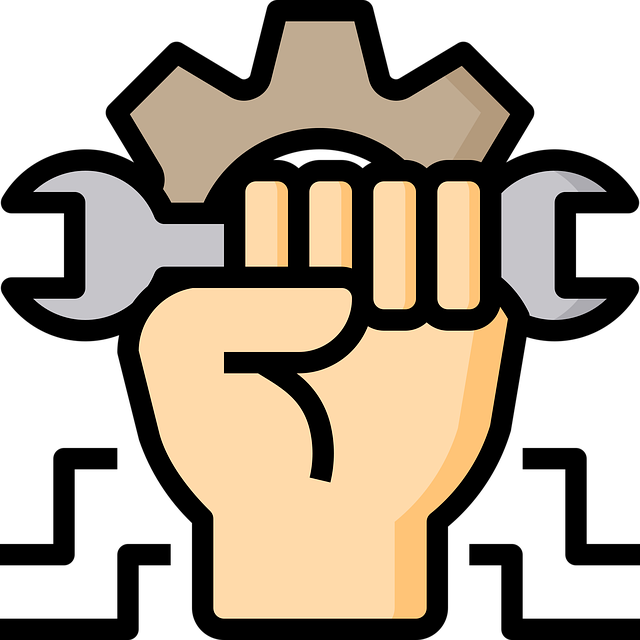Redesigning an e-commerce website requires a strategic approach focusing on business goals, user experience (UX), and continuous website maintenance. Key steps include identifying KPIs, optimizing functionality and navigation, and using analytics for informed decisions. Post-launch, regular audits, A/B testing, content updates, and usability testing are crucial. Mobile optimization, platform robustness, SEO integration, and staying current with trends are essential for long-term success in the competitive online market. Website maintenance ensures a seamless, engaging shopping experience that drives conversions and fosters brand loyalty.
In today’s digital landscape, a successful e-commerce strategy hinges on a well-designed website. This article guides you through the comprehensive process of web redesign, focusing on enhancing user experience (UX) and visual appeal for optimal sales conversion. From setting clear goals to implementing effective marketing strategies, we explore essential aspects like usability testing, mobile optimization, platform solutions, and continuous website maintenance. Discover how these key elements contribute to a robust e-commerce presence and drive business growth.
Understanding E-commerce Website Redesign Needs

Redesigning an e-commerce website is not a one-size-fits-all process; it requires a deep understanding of the unique needs and goals of the business. The first step in effective website maintenance is identifying key performance indicators (KPIs) that matter most to the online store. This could include metrics like conversion rates, average order value, bounce rates, or customer acquisition costs. By setting clear objectives, website owners can tailor their redesign efforts to address specific pain points and optimize user experiences.
A successful e-commerce redesign involves more than just aesthetics; it’s about enhancing functionality, streamlining navigation, and creating a seamless shopping journey. Website maintenance should focus on improving page load speeds, optimizing for mobile devices, implementing effective search functionalities, and personalizing content based on user behavior. Regular website audits and A/B testing are essential tools to gauge the success of redesign strategies and ensure ongoing performance improvements.
Setting Clear Goals for Your Redesign Project

When embarking on a web redesign for e-commerce, setting clear goals is paramount. Begin by evaluating your current site’s performance using analytics tools to identify pain points and areas for improvement. Define specific objectives such as increasing conversions, enhancing user experience, or improving load speeds. These goals should be aligned with your business strategy and measurable through key performance indicators (KPIs). For instance, if boosting sales is a priority, set targets for cart abandonment reduction and average order value increase.
Effective website maintenance involves regularly monitoring and optimizing your redesigned site post-launch. Continuously gather user feedback and analyze site metrics to ensure the goals are being met. Regularly update content, refine navigation, and implement A/B testing to tweak and enhance the user journey. This ongoing process ensures your e-commerce platform remains competitive and meets the evolving needs of your online customers.
User Experience (UX): The Cornerstone of Successful Redesigns

A successful e-commerce web redesign hinges on prioritizing User Experience (UX). Beyond aesthetics, UX encompasses how seamlessly and enjoyable users navigate the site, find products, and complete purchases. Effective website maintenance involves understanding customer behavior through analytics and user testing to identify pain points and areas for improvement.
By focusing on intuitive design, clear call-to-actions, and efficient checkout processes, e-commerce platforms can create a positive UX that fosters conversion rates and encourages repeat business. A well-maintained site that prioritizes user needs is not just a visual appeal; it’s a powerful tool for driving sales and building brand loyalty in the competitive online market.
Visual Design: Creating an Engaging and Modern Look

A successful e-commerce redesign goes beyond simply updating the look and feel of a site; it’s about creating an engaging, modern visual design that captivates users from the moment they land. Website maintenance isn’t just about aesthetics; it’s about enhancing user experience through intuitive navigation, high-quality visuals, and responsive layouts that adapt seamlessly to different devices. Incorporating clean lines, vibrant colors, and well-spaced elements not only makes the site visually appealing but also encourages browsing and drives conversions.
Think of your e-commerce platform as a virtual storefront. Just as a physical store relies on attractive displays and a welcoming atmosphere to draw customers in, your website needs to make a strong first impression. Modern design trends prioritize simplicity, minimalism, and intuitive layouts that guide users through the purchasing journey effortlessly. By focusing on these elements during web redesign, you not only elevate your brand’s image but also ensure that your site remains competitive in the ever-evolving e-commerce landscape.
Usability Testing: Ensuring a Seamless Shopping Journey

Usability testing is an essential aspect of e-commerce website redesign, aiming to create a seamless shopping journey for users. By simulating real user interactions, website owners can identify pain points and areas for improvement. This process involves gathering feedback from actual visitors to understand their preferences, expectations, and potential frustrations. Through various methods like surveys, interviews, or observational studies, developers can gain insights into the user experience (UX).
By addressing usability concerns, e-commerce platforms can enhance navigation, improve product discoverability, and optimize checkout processes. Regular website maintenance and iterative testing ensure that the site remains user-friendly, encouraging higher conversion rates and customer satisfaction. It’s a continuous process that keeps the online store relevant and competitive in a dynamic digital marketplace.
Optimizing for Mobile and Different Device Sizes

In today’s digital landscape, ensuring your e-commerce website is optimized for mobile and different device sizes is no longer a consideration—it’s a necessity. With an increasing number of users accessing online stores via smartphones and tablets, a responsive design that adapts seamlessly to various screen resolutions is pivotal. Website maintenance plays a crucial role here, as regular checks and updates ensure your site remains functional, fast, and visually appealing across all devices. This includes optimizing images, streamlining code, and implementing touch-friendly interfaces.
A well-maintained mobile-optimized e-commerce website enhances user experience, reduces bounce rates, and boosts conversion numbers. Mobile users expect the same level of convenience and functionality as their desktop counterparts. By prioritizing device adaptability, you not only cater to a broader audience but also stay ahead of search engine algorithms that favor mobile-friendly sites in ranking results.
Implementing Effective E-commerce Platform Solutions

Implementing effective e-commerce platform solutions is paramount for any online business aiming to thrive in today’s digital landscape. A well-designed platform offers a seamless user experience, enabling customers to navigate and interact with ease. This includes intuitive search functions, mobile responsiveness, and fast loading times, all contributing to higher conversion rates. Website maintenance plays a crucial role here; regular updates, bug fixes, and security measures ensure the platform remains robust and reliable.
E-commerce platforms also provide valuable analytics tools that offer insights into customer behavior, allowing businesses to make data-driven decisions. By leveraging these solutions, retailers can optimize their product listings, pricing strategies, and marketing campaigns, ultimately enhancing overall website performance and driving online sales growth.
Integrating Marketing and SEO Strategies into Redesign

When redesigning an e-commerce site, integrating marketing and SEO strategies is essential for boosting online visibility and driving sales. A comprehensive approach to website maintenance involves optimizing key elements like meta titles, descriptions, and header tags to enhance search engine rankings. By conducting keyword research and implementing these keywords naturally throughout the content, you increase your site’s chances of appearing in relevant searches.
Moreover, integrating marketing strategies ensures that your e-commerce platform is not only search-engine friendly but also engaging for users. This includes incorporating compelling calls-to-action, visually appealing product images, and user reviews to create a seamless shopping experience. Regular website maintenance and updates are crucial to stay ahead of competition; keeping content fresh, relevant, and optimized for both users and search engines is key to long-term success in the e-commerce landscape.
Continuous Maintenance: Post-Redesign Care and Updates

A successful web redesign for e-commerce isn’t just about creating an attractive new site; it’s also about setting up a robust framework for continuous maintenance and updates post-launch. Regular website maintenance is crucial to ensure your e-commerce platform remains functional, secure, and competitive. This includes fixing any bugs or glitches that arise, implementing security patches to protect customer data, and keeping the site optimized for search engines.
Beyond technical aspects, ongoing content refreshes are vital to maintaining user engagement. Regularly updating product descriptions, adding new items, and optimizing images will keep your website fresh and relevant. Additionally, staying on top of industry trends and competitor strategies allows you to make informed adjustments, ensuring your e-commerce site remains a dynamic and effective sales channel.
